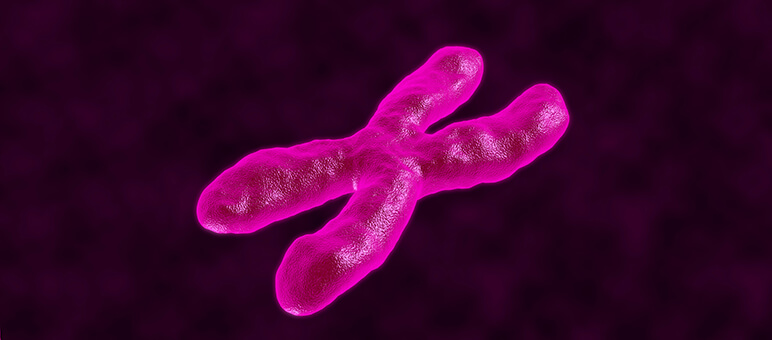Significance of turner syndrome and its treatment options.
An anomaly on one of your sex chromosomes is the hereditary cause of Turner syndrome. Gonadal dysgenesis, monosomy X, and Bonnevie-Ullrich syndrome are further names for it. Only those born with a feminine gender assignment can experience this disease.
The 46 (or 23 paired) chromosomes in the human body serve as genetic storage units. The X and Y chromosomes control your gender. One X and one Y chromosomes belong to the male sex. There are two X chromosomes in the female sex.

When an entire or a portion of an X chromosome is absent, Turner syndrome results. One in every 2,000 female newborns suffer from this disease.
Turner syndrome sufferers can live healthy lives, but they often need regular, continuing medical monitoring to spot and address issues. Turner syndrome cannot be prevented, and it is not understood what causes the genetic anomaly that causes the condition.
Symptoms of Turner syndrome
Turner syndrome patients who were given the gender of a female at birth can display specific traits during infancy, development, and maturity.
Numerous of these symptoms can be ill-defined and aren’t usually simple to link to Turner syndrome. Consult your child’s paediatrician if you have any concerns about your child’s growth at any time.
Infancy
Following are a few early-life indications of Turner syndrome:
- tiny size
- swelling of the feet and hands
- neck folds that are extra
- heart conditions
- having trouble eating
Young adult and childhood years
The symptoms of Turner syndrome could become a little clearer as a person gets older. A few of these indicators include:
- smaller than most of their contemporaries in height
- both their height and weight are below normal
- persistent ear infections
- hearing problems
- learning challenges
The underdevelopment of the ovaries is one of the key signs of Turner syndrome. Due to the fact that the ovaries are in charge of producing sex hormones, this underdevelopment can prevent or delay the development of the breasts and the onset of menstruation, which are typical signs of puberty in those who were assigned female at birth.
Estrogen-based hormone therapy can help with breast development and make the uterus bigger. Height development may benefit as well from it.
Adulthood
Some of the symptoms of Turner syndrome in adults can be the following if it is not treated earlier or if the individual has a severe version of it:
- fluctuations in the menstrual cycle
- hearing problems
- heart problems
- short in stature
It’s not a guarantee that you or your child has Turner syndrome even if you have one or more of these symptoms. But if you suspect something is wrong with your health or your child’s growth, it’s always a good idea to consult a doctor.
Causes of Turner syndrome
One of the two sex chromosomes, the X chromosome, is associated with Turner syndrome. Each human cell normally contains two sex chromosomes: males have one X chromosome and one Y chromosome, whereas females have two X chromosomes. Turner syndrome develops when a female cell only contains one normal X chromosome and the other sex chromosome is absent or physically abnormal. Development before and after birth is impacted by the genetic material that is absent.
The majority of people with Turner syndrome have monosomy X, which results in only one copy of the X chromosome rather than the typical two sex chromosomes in each cell of the body.
Turner syndrome can also develop if one of the sex chromosomes is not present at all but is only partially deleted or altered. Mosaicism is the term for a chromosomal alteration that occurs in only some of the cells of certain women with Turner syndrome. Mosaic Turner syndrome refers to women with Turner syndrome brought on by X chromosomal mosaicism.
Which genes on the X chromosome are responsible for the majority of Turner syndrome’s characteristics is still a mystery to scientists. One gene, known as SHOX, has been found to be crucial for bone growth and development. In women with Turner syndrome, the loss of one copy of this gene most likely results in short height and skeletal deformities.
Complications from Turner syndrome
Turner syndrome patients are more likely to experience some health issues. However, most problems may be treated with the right monitoring and routine exams.
- Kidney abnormalities. Turner syndrome patients frequently have kidney problems. Some persons who have Turner syndrome also get recurring UTIs (UTIs). This is due to the possibility that the kidneys are malformed or situated incorrectly within the body.
- High blood pressure. These kidney anomalies might lead to high blood pressure.
- Hypothyroidism. Another potential issue is hypothyroidism, a condition in which your thyroid hormone levels are low. It may be brought on by thyroid gland inflammation, which some Turner syndrome sufferers may experience.
- Celiac illness. People with Turner syndrome are more likely than the general population to get celiac disease, so it can frequently affect them. In those with celiac disease, an allergic reaction to the protein gluten, which is present in foods like wheat and barley, occurs in the body.
- Heart abnormalities. Turner syndrome patients frequently experience heart problems. High blood pressure and issues with the aorta, the primary artery connecting the heart and the rest of the body, should be kept an eye on in those with the condition.
- Lymphedema. Turner syndrome patients frequently experience lymphedema, or swelling brought on by fluid retention, in their hands and feet.
How is Turner syndrome diagnosed?
Turner syndrome can be diagnosed by a clinician using prenatal genetic testing done before to birth. Karyotyping is a scientific process used to diagnose the illness. Karyotyping can determine whether the mother’s chromosomes have any genetic abnormalities when it is done as part of prenatal testing.
Additionally, your doctor may request testing to check for the physical signs of Turner syndrome. These tests could consist of:
- checking the levels of sex hormones in the blood
- A heart defect examination using an echocardiogram
- pelvic exam
- kidney and pelvic ultrasound
- chest MRI scan
Turner syndrome treatment
Turner syndrome can be diagnosed, but you can still live a full, happy life. Despite the fact that there is no cure, there are therapies that can help you manage your symptoms and enhance your quality of life. Children with Turner syndrome might become taller with growth hormone therapy. These daily shots often begin around age 5 or 6 and stop around age 15 or 16.
Another option for treatment is oestrogen and progesterone replacement. These hormone supplements can help make periods more regular and promote the growth of secondary sex characteristics like pubic hair and breasts. These hormone replacements may need to be continued for the majority of an individual’s adult life and are typically administered at the beginning of puberty.
Turner syndrome is a rare disorder, and while some people with it may be able to get pregnant, many others may find it more challenging. There are a couple of potential alternatives, including egg donation and assisted conception methods like in vitro fertilisation (IVF).
People with Turner syndrome can benefit greatly from the assistance of their families, therapists, and support groups, especially if they also have learning disabilities or emotional pressures related to their symptoms.
REFREENCES:
- https://www.healthline.com/health/turner-syndrome
- https://www.mayoclinic.org/diseases-conditions/turner-syndrome/symptoms-causes/syc-20360782
- https://medlineplus.gov/genetics/condition/turner-syndrome/
- https://my.clevelandclinic.org/health/diseases/15200-turner-syndrome
For more details, kindly visit below.
